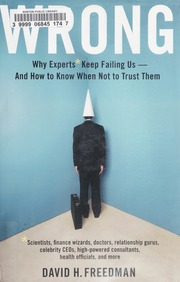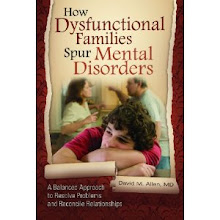I have been discussing the old genetic vs. environmental arguments
about the causes of different human behaviors. I have also talked extensively about
how, at this point in our knowledge of neuroscience, looking at MRI and other
brain scans in various contexts yields very little
definitive information about this question. Nonetheless, they have
frequently been used to justify a “disease model” for every diagnosis therapists
and psychiatrists talk about, as well as determining which of these diagnoses
represent a brain abnormality rather than an adaptation. I likened this to
trying to determine whether the stock market went up or down by measuring the
electricity usage at the exchange. For brains, it’s worse that that, since any
given circuit is influenced by other circuits in a variety of different parts
of the brain.
A big and related debate these days - in both political and
psychology circles - is whether the seeming differences in male vs. female
interests and jobs are due to the innate biological difference between male and
female brains, or are due to the culture in which we live. Are these differences
due to sex, or are they due to sexism?
In this book, Cordelia Fine makes an almost airtight case for
the latter idea, and she does a fantastic job of disputing people who argue for
the other side. For example, how do we explain the apparent lower interest level
of females in STEM (science and math) fields relative to men? Some scientists often
argue that this is due to brain differences between males and females. I saw
one of these arguments based on the country of Finland, which is considered the
most gender liberated country in the world. The percentage of STEM applicants
and practitioners of women there is still much lower than percentage of men. So
therefore it must be due to biology?
That argument reminded of a study which tracked by country the
percentage of people who develop cardiovascular disease versus how high a
percentage of fat, on the average, they have in their diets. Of course, fat
lost. But did it? They somehow forgot to
include countries like France in which fat consumption is relatively high, but the
prevalence of cardiovascular diseases is relatively low. Fine points out that
in the country of Armenia there is a lot of differences in the level of
interest in STEM. But guess what? Despite
a pretty egalitarian society, the interest in STEM in females there is higher there than in the men.
Do little girls have a natural tendency to prefer pink
clothes over other colors? It seems so, doesn’t it? Unfortunately, pink did not
become identified as a girl color before the middle of the last century.
The author rebuts those who use the issue of male vs. female
hormones to try to prove biological differences. She points out that many
hormone levels are as much determined by life style differences as the other
way around. Using hormones this way is also sort of like biological scientists
who equate certain patterns of changes on brain MRI’s in those with various
(primarily) psychological disorders as evidence that individuals with the
diagnosis as having a “disease,” when the changes may be due to learning. Every
time you learn anything, the brain physically changes through neural
plasticity.
She also discusses how parents who try to raise their kids in
a gender-role neutral matter are quite often unsuccessful in this endeavor.
More evidence for brain differences? Well, no. Infants are extremely sensitive
to how the people around them act, which is sensitive to prevailing culture far
more than most people realize. Women still take care of children more often
than, even when both of them are working full time. In language, different
adjectives are used to describe the physical appearance of things like hair
with boys vs. girls. And that’s just the tip of the iceberg.
She does not suggest that there are no biological differences between the brains of men and women,
since of course there are. It’s just that these differences do not generally
determine any individual’s career choice or interest in STEM or anything else.
It seems clear that when it comes to things (outside of shear physicality),
there are few things that one sex can do better than the other, especially when
it comes to social role differences such as family/parenting duties vs.
careers. About the only one I can think of is breastfeeding, which, last time I
checked, men are just completely unable to do.
The author acknowledges that in the past, traditional gender
roles did more serve an important purpose. I’ve pointed out that in the days
when family farms were almost the total employment picture, having a lot of
babies generally made family richer - since the kids were the farm help. Child
deaths and deaths of mothers in childbirth were also high, so it made more
sense that woman should stay home and have a lot of babies.
She also acknowledges, and in fact makes a good case for,
that in employment there has been a lot of progress on men and women being
treated more equally in the last few decades, She also correctly points out
that of course we still have a long way to go in that regard. For instance, she
points out that a lot of business deals take place in places in which females
are not generally welcome, such as strip clubs. (The book came out in 2010, and
that may have already changed some). She mentions a case in which a new hire
shook the hands of all of the fellow male employees, but not that of the one
female (in the last decade or so, men who act like that may be concerned that
they will be accused of inappropriate sexual advances. One does hear a lot about
that these days). Sexual harassment is of course still fairly common, although
not nearly as much as before the me-too movement.
She spends a lot of time going into why it’s so difficult to
change society in any significant in way, when society works the way it does. However,
she seems unaware of what I think is one of the big ones currently, the reasons
behind the so-called “game without end.” See https://davidmallenmd.blogspot.com/2010/11/changing-rules-of-game-that-will-not.html.
The problem that creates the game without end is that we
can’t read minds. When people suddenly change behavior they used to frequently engage
in, other people are naturally skeptical and suspicious. If a man says he wants to share the housework and
parenting duties equally with his wife, does he really? There are still many
who don’t after all, even after Me Too. If someone happens to notice how the
other spouse is skeptical in a case like this, they might be able to discuss it
in productively. But can even that be
trusted? To remind my regular readers, what happens next is telling. Hubby will, for instance, take care of kitchen
duties but do a sloppy job of it. When the wife then complains about that, he
concludes that she really does see the kitchen as her own private domain,
despite what she says.
The other thing important to remember about the game is that
both members of a relationship are reading one another’s motives
simultaneously, which creates a situation in which both feed into each other’s
ambivalence about something, making the whole problem of how to change even
more unsolvable. And even worse, if as is usually the case their parents are as
ambivalent about gender roles as they are, they too will inadvertently feed
into the whole process. When they do it, it is especially powerful. (For the
solution of the game without end, see https://davidmallenmd.blogspot.com/2011/04/putting-end-to-game-without-end.html).

















